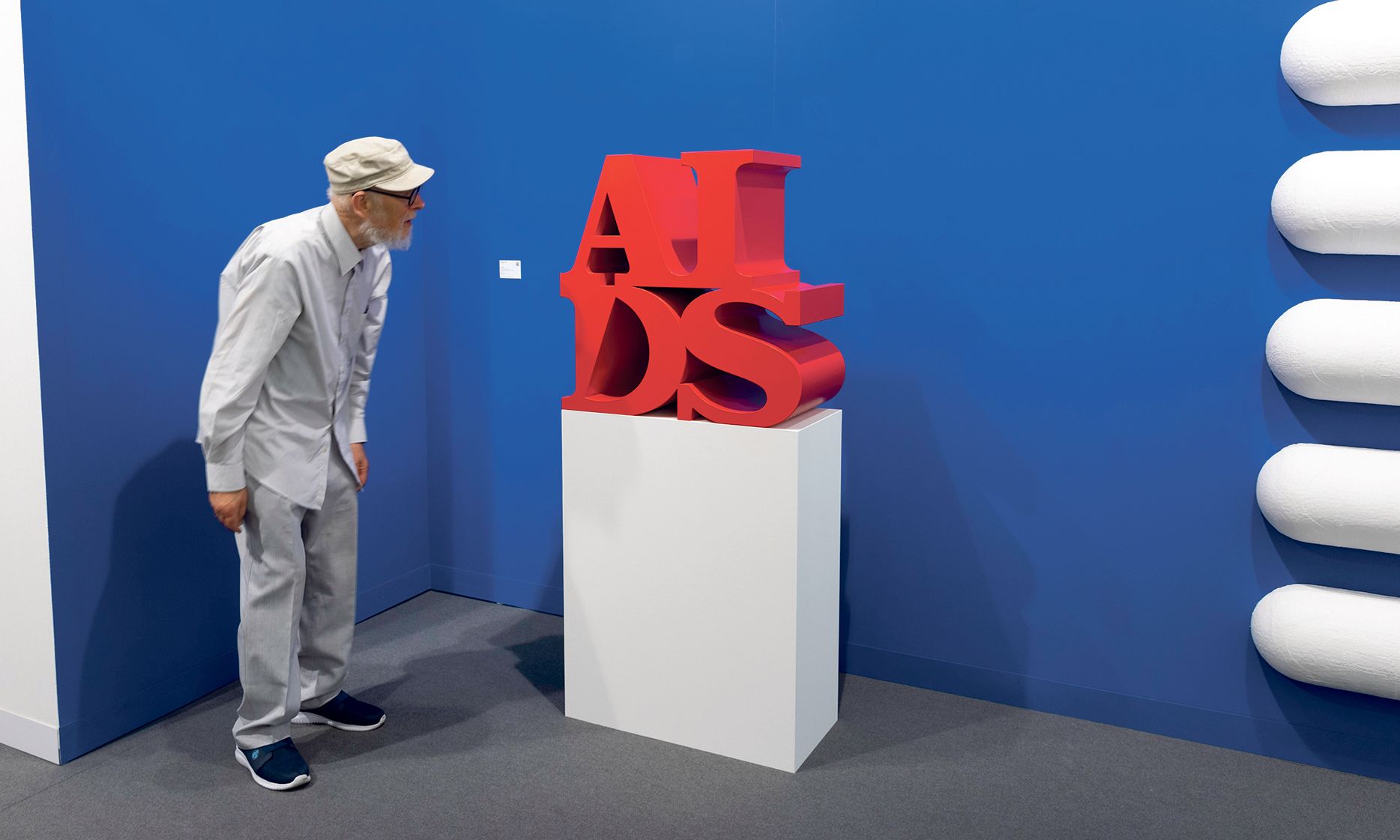General Idea’s AIDS (Red) (1989/2021) is for sale at the Mitchell-Innes & Nash stand David Owens
Artists who reflect on the HIV/Aids crisis are taking centre stage at Art Basel, with the late photographer Peter Hujar especially undergoing a renaissance both critically and commercially. Hujar died of an Aids-related illness in 1987, aged 53; his photographs of drag queens, poets, artists and Sicilian catacombs currently on show in Venice (Portraits in Life and Death, until 24 November) have been a talking point of this year’s Biennale.
A work by Hujar showing the UK drag queen Lavinia Co-op (1980) is available with Pace gallery, which co-represents the Hujar estate, at Art Basel ($45,000). “People get emotional when they look at his works,” says Lauren Panzo, the vice-president of Pace, who credits a 2018 show at the Morgan Library & Museum in New York with boosting Hujar’s profile. An online statement from the museum says that Hujar’s career “paralleled the public unfolding of gay life between the Stonewall uprising in 1969 and the Aids crisis of the 1980s”.
“There are so many iconic Hujar photos but there are still many undiscovered images,” Panzo adds, highlighting the Steel Ruins series of 1978. Hujar’s current auction record stands at $252,000 for Self-Portrait (with string around his neck) (1980), which sold online at Christie’s earlier this year.
Another artist who explores the emotional repercussions of the Aids crisis is the New York-based Ross Bleckner, whose vast striped painting Infatuation (1986) is a stand-out work in the Unlimited section. The piece was painted at the height of the Aids crisis. According to Jennifer Blessing, writing on the Guggenheim museum website, Bleckner’s motifs from the mid 1980s “are elegiac and directly related to the ravages of Aids”. The gallerist Christophe Van de Weghe, who is offering Infatuation, at $350,000, says, “I only buy Bleckner’s early stripe paintings as they’re the most sought after. I bought this one ten years ago after first seeing it in his Guggenheim retrospective in 1995.”
The Canadian art collective General Idea is also making its presence felt at the fair with its appropriation of the Pop artist Robert Indiana’s LOVE works supplanting the word “love” with “Aids”. The work (edition two of three) is available with Mitchell-Innes & Nash gallery (€110,000). General Idea’s work takes on extra resonance following the Covid-19 pandemic, says the gallerist Lucy Mitchell-Innes.
Meanwhile, one of Keith Haring’s most important works—an 18-panel frieze Untitled (FDR NY) #5-22 (1984)—is on show in Unlimited (with Martos gallery and Gladstone gallery). Haring died in 1990 from an Aids-related illness but his stock has never been higher. The monumental work—created in situ on a fence lining the Franklin D. Roosevelt East River Drive in New York in 1984—is priced at $22m.

